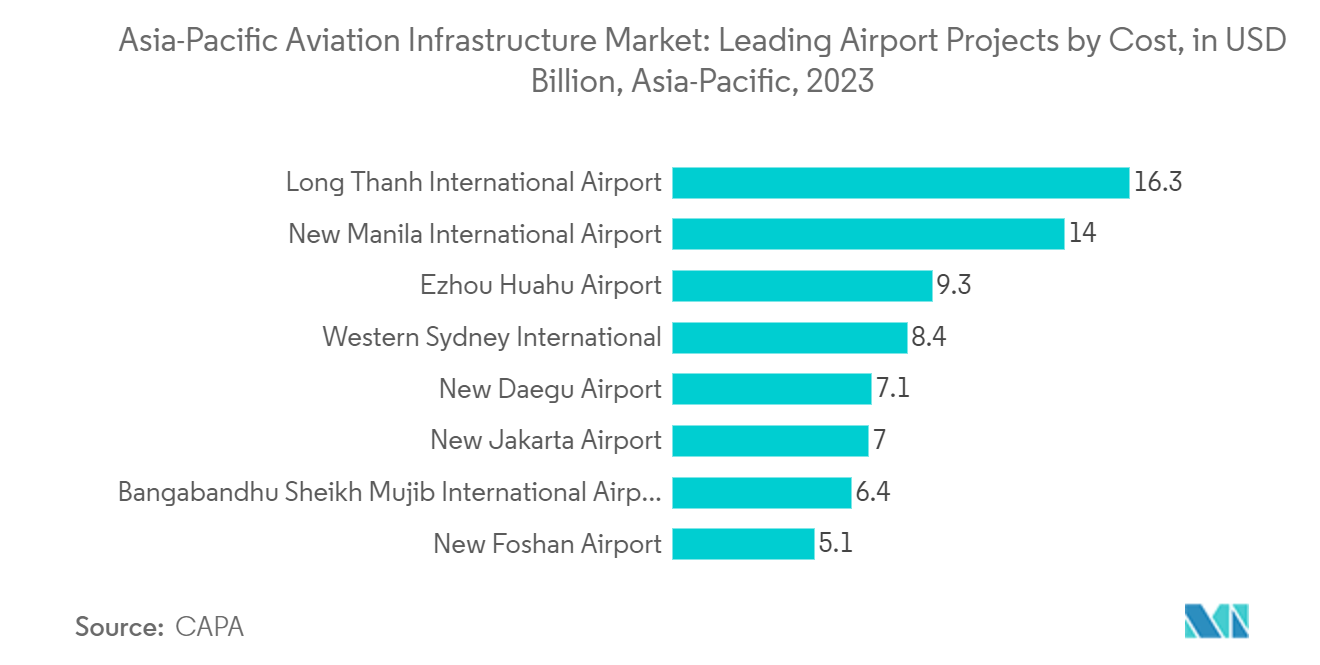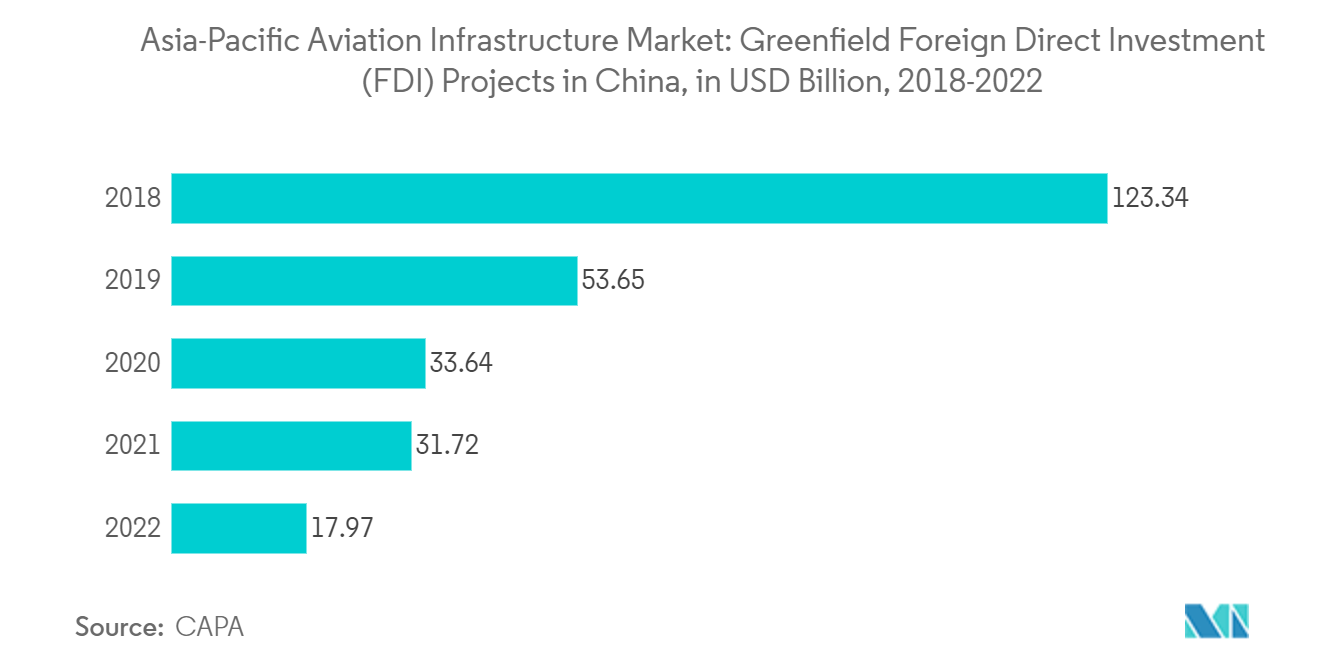Market Trends of Asia-Pacific Aviation Infrastructure Industry
Commercial Airport Segment is Expected to Dominate the Market During the Forecast Period.
Currently, commercial air passenger traffic is witnessing high growth in Asia-Pacific, and it is also expected to continue to grow significantly in the future. Moreover, air freight transportation is expected to grow significantly during the forecast period.
In this regard, airport authorities are investing in the development of the existing infrastructure by constructing new terminals or restructuring the existing ones. For instance, In June 2021, Varaha Infra Limited got a contract from the Airports Authority of India for the development of a new greenfield airport in Gujarat, India. According to the assessment by the Airports Council International in 2022, the Asia-Pacific region continues to be a geography with significant potential for aviation, as 57% of the 300 planned airports globally are coming up in this part of the world. Such developments are expected to augment the market prospects during the forecast period.

China is Expected to Lead the Market During the Forecast Period.
China held the highest shares in the market and continued its domination during the forecast period. The growth is attributed to the rising spending on the aviation sector, increasing demand for new aircraft, and growing airport construction projects across the country. Increasing air traffic and rising disposable income demand new aircraft, driving the market growth. China's major plane manufacturer, Commercial Aircraft Corporation of China (COMAC), predicted that China's aircraft fleet size will likely reach 9,957 by 2040, accounting for around 22 percent of the global passenger aircraft fleet, making China the world's largest single aviation market. The report stated that the country would take delivery of 9,084 passenger planes at or above the 50-seat class in the next two decades, valued at approximately USD 1.4 trillion.
Furthermore, the Civil Aviation Administration of China (CAAC) aims to add another 215 airports to reach a target of 450 by 2035. China envisions constructing an average of 14 airports annually until 2035 to help transform the country's aviation industry into a strategic asset of its economy. The construction of new airports would facilitate the creation of new routes and the induction of a new aircraft fleet to address the additional passenger traffic. Such developments would bolster the adoption of sophisticated infrastructure to ensure operational efficiency in the country.


